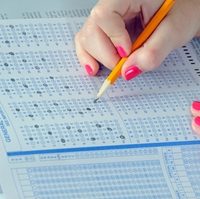It's an instructor's job to help kids of all ages determine which methods work best for them, as this helps develop good study habits. Starting as early as kindergarten, hinting at the value of competent learning strategies will assist a child with discovering how to remember useful information. The skills acquired at this early age will benefit students all the way through college. Usually, teachers have a repertoire of study techniques they prepare students with throughout school, but studies have determined that some of these methods work better than others.
Least productive study methods
A study published in the journal Psychological Science of Public Interest found five common study practices that were not that effective when it came to consistently boosting performance and remembering long-term information. These methods included:
- Summarization.
- Highlighting.
- Mnemonics.
- Imagery for text learning.
- Re-reading.
These are preferred methods by students and teachers alike because they are easy to implement and do not take a lot of extra work. Highlighting, for instance, can be performed as a student is completing a reading assignment, finishing two tasks at once. Emphasizing particular words or scenes from a text will draw more attention to those phrases, but the study found that overall, the process did little to improve performance. Part of this can be attributed to some students becoming overly enthusiastic when it comes to highlighting. This can result in students marking words and sentences unnecessarily, thus ineffectively using the method.
Most useful strategies
Although some strategies were deemed ineffective, the study also discovered learning methods that helped increase student performance. The two most effective techniques were utilizing practice tests and distributed practicing. For many students, the idea of testing, even if it's only for preparation, is unwelcome. Taking advantage of this method might require a little extra work on the instructor's or parent's part because the tests need to be obtained and then passed out. Although materials can also be dispensed on the computer through online practice tests, which would ultimately help kids prepare for online tests. The benefits of this method are well worth the effort as students gain the opportunity to understand the test format and will also be able to determine which areas they need to study more.
The other most effective method, distributed practicing, is studying material over an extended period of time. Usually, students prefer to ignore information after it's been taught and only come back to it a day or two before an exam. The distributed method advises that students space out study sessions, Time noted. One way teachers can help with this strategy is to block out 30 minutes at least once a week to go back over material that was previously taught. This will help keep the information fresh in a student's mind and it will also boost subject retention.


Im thankful for the forum topic.Thanks Again. Will read on… Cower